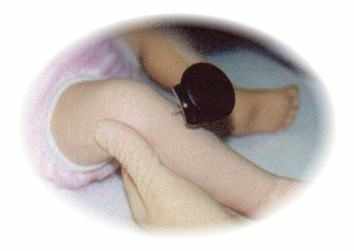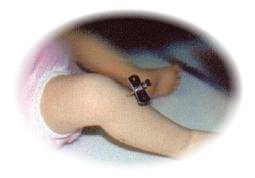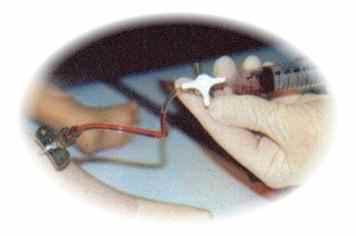• Home Page
Main Index
1992
• Training/Info
• Drugs
LAS
• Drugs
Print
• Slide
Show
•
Clipart & gifs
• Mini
polls
• Poem
Learning
• ECG
• Paediatrics
Useful Links
Paramedic
registration
![]()
LAS paediatrics information and protocols
•Contents of this area contain overviews of LAS protocols, charts and other related Information. Please note they may not relate to your own service and some information may not be up to date, as changes in protocols are are being continually revised and updated
•Cannulation may be attempted in any peripheral vein with the appropriate cannula but no more than two attempts should be made. If a child is shut down peripherally with no veins visible, the correct form of action is not to attempt to gain IV access and move the child to hospital without delay. If the patient is critical, establish Intra-osseous infusion. If fluid required replace at 20mls/kg. A further fluid challenge may be given if required .
Intraosseous cannulation
|
|
|
|
|
Paramedics in general shy away from this technique due to the rarity of this procedure, but in reality will only take a few minutes to perform. Also the use of three way taps in the pre hospital setting is also uncommon, for UK Ambulance crews. And for this reason seem "too fiddly" to get to grips with. A good way to remember is to have the syringe and the tube leading to IO in line. Also take note of the position of the white tap as shown in picture. Make a plus sign "+ " with the tap, so the connecter to the giving set makes a part of that plus sign. You will then only have to turn the tap a quarter of a turn when in use. Once anti-clockwise to draw up fluids. Then once clock-wise to administer drugs or fluid. |
LAS Protocol Intraosseous
This technique involves infusion of fluids or drugs into the intra-medullary space of a long bone usually the tibia. It may be only attempted twice in any patient and both attempts should be limited to one leg. It should not be attempted on a fractured leg regardless of fracture site. Age range is from 1 to 14 years. If patient requires more than 20mls/kg of infused fluid, seek medical advise via CAC.
Indications LAS ETO5
A child between 1and 5 years in cardiac arrest and where a peripheral IV cannot be sited within 90 seconds. However it may also be considered in children up to the age of 14 where IV access has proved or will prove to be difficult.
A child aged between 1and 14 who is in a critical condition, due to hypovolaemia of any cause and which peripheral UV Cannulation has not proved possible within 2 attempts.
I.O procedure LAS
•Confirm that patient meets indication criteria (see above).
•Ensure sterile gloves are worn
•Identify site. proximal Tibia 1or2 finger breadths below the tibial tuberosity.
•Place a rolled towel or similar item under the knee to assist support.
•Prepare site with alcohol swab.
•Colleague to open I.O cannula packaging. Operator to remove cannula without touching cannula sheath.
•Hold needle at 90 degrees to bone and pierce skin.
•When needle reaches the bone use "bradawl" motion to inset into marrow.
•Remove needle/hand section and dispose of sharps.
•Attach 5ml syringe to the needle and attempt to aspirate small amount of blood and bone marrow. If none aspirated still proceed.
•Attach 5ml syringe containing sterile saline and try to flush. If the cannula is correctly sited, it should flush easily, and there will be no infiltration of surrounding tissues.
•When needle is in the bone marrow it must be secured firmly in place.
•The cannula can now be used for fluid or drug administration. Fluids will be infused with IV push using 20ml syringe, three way tap connector tube and giving set and fluid
•When not in use for drug or fluid therapy, the cannula must be capped with standard luer cap.
•Use bulky sterile dressing to buttress the cannula as you would an impaled object and secure the dressing in place.
Potential hazards
Infection
Osteomyelitis has been reported in
a small number of patients who have undergone this procedure. Strict
attention to aseptic techniques are, therefore an essential requirement.
Infiltration
Incorrect placement of the intra-osseus needle can lead to infiltration of
the surrounding tissues. This can be prevented by confirming that the
needle is within marrow cavity before infusing fluids through it.
Infiltration may also occur at the point at which the needle enters the
bone. Infiltration will become evident by signs of tissueing around the
cannulation site.
Damage to Epiphyseal Growth plateThis can be avoided by good insertion technique and accurate land marking of the site prior to insertion.
LAS paediactric Estimations information
To estimate :
-
Weight (Kgs) = ( age in years + 4) x 2
-
Sytolic BP = Age x 2 + 80
-
ET tube size = (age in years) divided by 4 + 4
Once you estimate the childs weight (see above) in Kg, then the rest is easy.
if the child is 30kg. Drug dosage will be .1mls/kg. So just move the decimal point one place to the left. A 30kg child will have a dose of 3.0mls. To estimate fluid challenge 20mls/kg. Double weight and add a 0.( move decimal point one place to the right). e.g. 30x2=60 x10 =600mls fluid challenge.
Examples.
Child 24kg = 2.4mls drug dosage 480mls fluid challenge
Child 33kg = 3.3mls drug dosage 660mls fluid challenge
Fluid challenge. 20mls/kg
Defibrillation. 2j/kg on shocks 1 and 2. 4j/kg subsequent shocks
Epinephrine in cardiac arrest. O.1ml/kg
Normal vitals
-
0-1 years pulse 110-160, resps 30-40, Systolic BP 70-90
-
1-5 years pulse 100-140, resps 20-30, Systolic BP 80-100
-
5-14 years pulse 80-120, resps 15-20, Systolic BP 90-110
Capillary refill child
Click here for animated picture of normal and delayed capillary refill on child.
![]()
Hazards with I.O.


